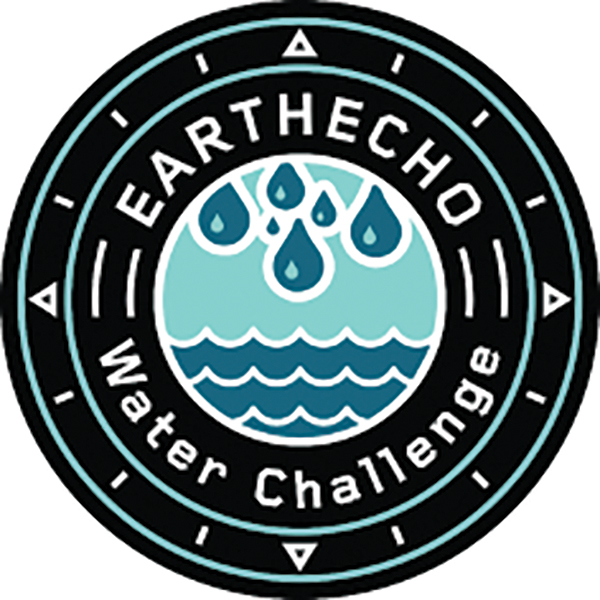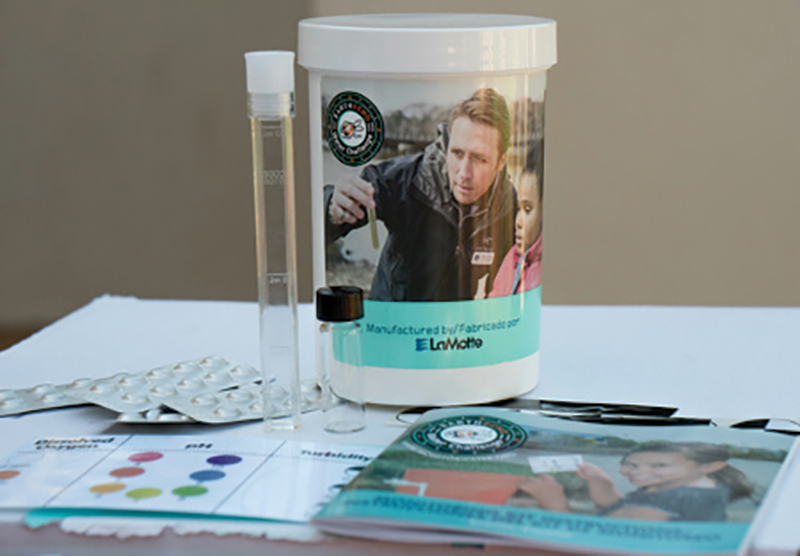Citizen Science
EarthEcho Water Challenge
Dive in to locally engaged, globally connected citizen science

The EarthEcho Water Challenge is a global citizen science program of EarthEcho International, a non-profit organization whose mission is to inspire young people to take action towards a sustainable future. The water challenge runs annually from March 22 (World Water Day) through December. To take part in the EarthEcho Water Challenge, learners from around the world monitor local bodies of water and share the data online; participants are invited to take action based on their local water quality findings. The shared global data combine to yield a comprehensive water quality map of the world. To date, nearly 80,000 bodies of water have been sampled by over 1.6 million participants in 146 countries around the world. The challenge engages learners in real world science, cultivates awareness of water quality issues, and inspires community-based action to protect water resources.
Project goal: To share global water quality data and inspire action to protect water resources
Your task: Monitor local water quality, share data, and take action to protect water resources
Science discipline: Earth and Environmental Science
The EarthEcho Water Challenge invites learners to monitor bodies of water including wetlands, bays, estuaries, ponds, lakes, oceans, rivers, streams, creeks, canals, springs, and more. During the citizen science experience, students will have the opportunity to collect data on water turbidity (clarity), temperature, pH, and dissolved oxygen measures. To get started, it is helpful to view the introductory video (See “Video Introduction”) as it provides an overview of the project, including tools, tips, and techniques. The program provides the option of purchasing a water monitoring kit to collect project data (See Figure 1).

Once collected, the data are entered into the water quality database on the project website (See “Project Home”). Students are also encouraged to submit photos and stories related to the experience. The shared data provide a snapshot of water quality around the world. The results and findings lead to further questions and even extended engagement in local community projects related to water issues. The EarthEcho Water Challenge provides abundant online resources and opportunities for students and educators to play an active role in protecting water resources.
Materials you will need:
- A computer with internet connection to upload data
- A water test kit to measure temperature, pH (acidity), turbidity (cloudiness of a fluid), and dissolved oxygen (the amount of oxygen present in the water) (See Figure 1 for an image of the kit’s materials and See “Order Kits”)
In addition to the data that you submit to the project, historical data are also available via the online shared database; these data allow for further investigation and unbounded student questions. If your learners are remote/distributed, you can utilize the historical data for water quality comparisons between varying geographic locations or to explore change over time in water quality for a specific location. Students can access water quality data and utilize the information to provide evidence supporting claims of the presence (or absence) of appropriate aquatic habitat for various species of wildlife, both terrestrial and aquatic.
If students aren’t able to collect water quality data in the field as a class group, they can collect from wherever they are located (such as their home, neighborhood, or nearby park), or you can create a virtual field trip for students; educators can go into the field to gather water samples, (taking images or video of the process), and collect and share the data with students.
Students will enjoy the deeper dive into water quality measures, such as pH, and what the measures signify for abiotic and biotic components of an ecosystem. Engagement in water quality citizen science opportunities tends to lead to student interest in community projects and action on local environmental issues.
The topic of water permeates many of the disciplinary core ideas in science, including life science and earth science. The study of water also aligns with crosscutting concepts such as energy and matter. Additionally, the process of engaging in science brings the science practices to life for students, as learners gain experience in conducting investigations and analyzing and interpreting data. Water topic exploration coupled with engagement in the EarthEcho Water Challenge fosters the application and integration of core ideas and crosscutting concepts in science. The EarthEcho Water Challenge serves as a catalyst towards meaningful student-driven solutions that address 21st century science issues.
EarthEcho Water Challenge at a glance
When: Annually from March 22 through December 31.
How: Sample a body of water and measure the (1) temperature, (2) pH, (3) turbidity, and (4) dissolved oxygen amount; submit your data to the project website (See “Project Home”).
Where: Global.
Time needed: Variable; average sampling time is 15 minutes.
Special equipment needed: Water testing kit. To order EarthEcho’s kit, you can visit the project page (See “Order Kits”), or you can use your own water testing kit.
Cost: No cost to participate. The only cost associated with the project is the water test kit.
Contact for more information: https://www.monitorwater.org/contact
Safety: As with any science lab, classroom, or field activity, always ensure that you are following recommended safety practices; for more information on safety in the science classroom visit www.nsta.org/safety.
Helpful Project Links:
Project home: https://www.monitorwater.org/
Action Guides and Lesson Plans: https://www.monitorwater.org/tools/action-guides-lesson-plans
EarthEcho International Educator Resources: https://www.earthecho.org/educator-resources
Event Resources: https://www.monitorwater.org/tools/event-resources
Extensions: Expeditions and More: https://www.earthecho.org/expeditions
Helpful Links: https://www.monitorwater.org/tools/links
Order Kits: https://www.monitorwater.org/order-kits
Reports and Data: https://www.monitorwater.org/tools/reports
Video Introduction: https://youtu.be/BcbK4tHrVyw
Project link on SciStarter: https://scistarter.org/earthecho-water-challenge
EarthEcho Water Challenge Kit information: https://scistarter.org/earthecho-water-challenge-test-kit
This column is the result of a partnership between SciStarter and the National Science Teaching Association. For more information about SciStarter and other citizen science projects, please visit www.scistarter.org.
Jill Nugent (jillfnugent@gmail.com) teaches science online, engages educators in citizen science experiences for the classroom, schoolyard, and beyond, and serves on the SciStarter Team. Follow SciStarter on Twitter: @SciStarter.
Citizen Science Earth & Space Science Environmental Science High School


